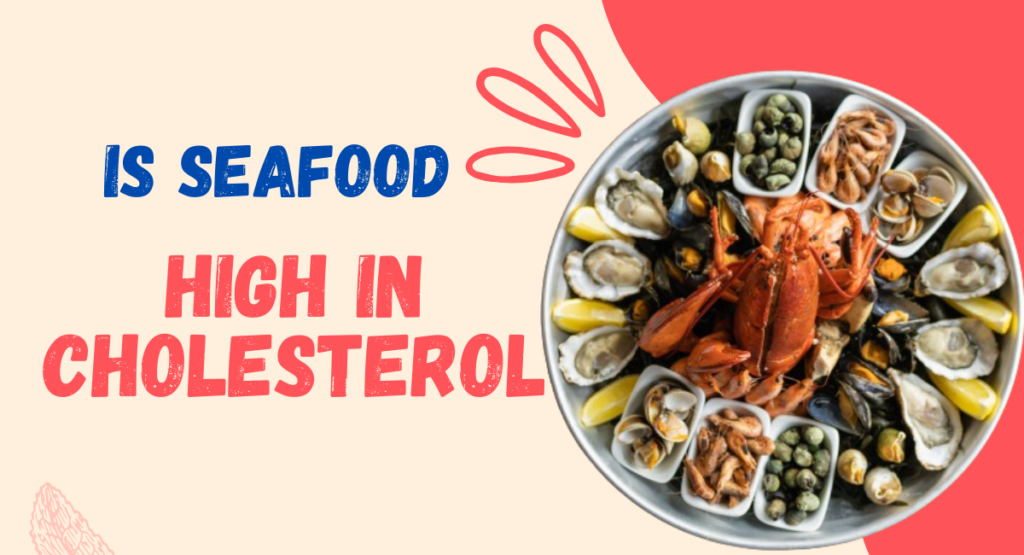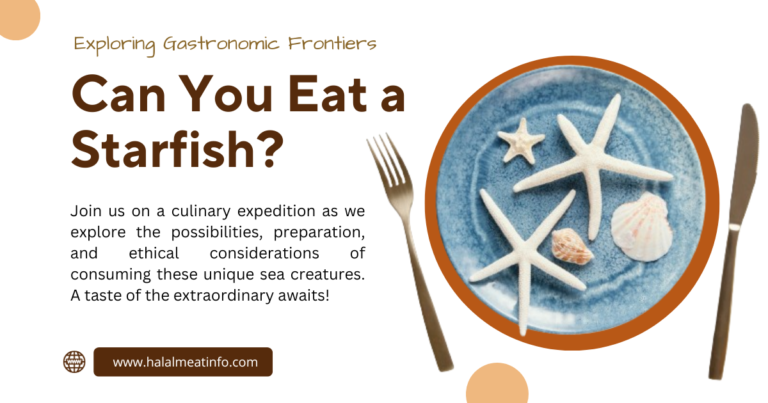Is Seafood High in Cholesterol? Unraveling the Facts
People who are concerned about their health often choose seafood because of its reputation as a nutritious and lean protein source. However, because seafood is often associated with a rich diet, many people ask if it contains a lot of cholesterol. The purpose of this article is to give accurate information regarding the cholesterol levels of different seafood kinds and to debunk myths about this topic. If you want to know, is seafood high in cholesterol? Or how to incorporate seafood into a healthy diet, read on.

Introduction to Seafood
Seafood refers to a wide variety of marine species, including shellfish, mollusks, and fish. It helps keep you healthy all over since it contains so many important nutrients. Because of its high protein content, it promotes healthy muscle growth and recovery. Many people feel that eating seafood, which is rich in Omega-3 fatty acids, can help lower the risk of cardiovascular disease and support healthy brain development in children. Vitamins D and B2 (riboflavin) and minerals including zinc, iron, calcium, and potassium are abundant in several seafood varieties. Though it does include cholesterol, the saturated fat that contributes to heart disease is quite low in seafood. So, seafood can be an important component of a healthy diet when eaten in moderation.
Understanding Cholesterol
All of your cells contain cholesterol, a waxy, fat-like material. Although it’s commonly linked to health issues, cholesterol is actually necessary for optimum bodily function. It’s absolutely necessary for the production of vitamin D, certain hormones, and cell membranes.
One kind of cholesterol is HDL, and the other is Low-Density Lipoprotein (LDL). ‘Bad’ cholesterol is the colloquial name for LDL. A buildup of LDL in the walls of blood arteries can constrict them and increase the risk of heart disease when levels in the body are too high.
Contrarily, high-density lipoprotein (HDL) cholesterol is the “good” kind. Reduced risk of heart disease is a result of HDL’s role in transporting cholesterol from various regions of the body back to the liver for removal.
Plaque formation in the arteries, an illness called atherosclerosis, can be caused by high cholesterol levels, especially LDL. A higher chance of cardiovascular disease and stroke may result from this. Consequently, for the best health results, it’s recommended that you keep your cholesterol levels in check.
Seafood and Cholesterol
Many people know that seafood is a great way to get the lean protein, vitamins B2 and D, and minerals like selenium, zinc, iodine, and iron that our bodies need. The abundance of heart- and brain-healthy Omega-3 fatty acids in seafood is what really sets it apart from other foods on nutritional charts.
Seafood has a more nuanced profile when it comes to cholesterol. Cholesterol is present in seafood, however the amount varies greatly among varieties. As an example, although shellfish such as shrimp and lobster have a higher cholesterol content than the average fish, they have a lower saturated fat content, the main factor responsible for increasing blood cholesterol levels. Although they have a greater fat content, fatty fish such as sardines, mackerel, and salmon are good for your heart because they contain Omega-3 fatty acids.
How Much Cholesterol is in Fish?
There is a wide range of fish types when it comes to the cholesterol content. Cholesterol levels are often higher in fatty fish than in lean fish. Take salmon as an example; a 100g serving has around 63mg of cholesterol, whereas a similarly sized dish of lean cod has only about 37mg. While fatty fish such as salmon, mackerel, and sardines do contain cholesterol, they are also excellent sources of heart-protective Omega-3 fatty acids. In general, eating fish as part of a balanced diet is a good idea. However, for best health, it is recommended to consume it in moderation, as is the case with all foods.
Seafood: The Good and The Bad
As we delve deeper into the cholesterol content in seafood, it’s essential to understand that not all seafood is created equal. Some types of seafood are relatively high in cholesterol, while others are lower.
what seafood is high in cholesterol
Many people are surprised to learn that shellfish is high in cholesterol. As an example, a 100-gram portion of shrimp has around 189 mg of cholesterol. The cholesterol content of lobster, another favorite shellfish, is approximately 145 mg per serving. Remember that shellfish are low in saturated fat, the main culprit of high blood cholesterol levels, despite these numbers. It is crucial to consume in a moderate and balanced manner.
Seafood Lower in Cholesterol
Alternatively, several seafood varieties are reported to have a reduced cholesterol level. Wonderful options with cholesterol levels between 40 and 70 milligrams per 100 grams of fish are tilapia, cod, and haddock. In addition, everyone’s diet can benefit from eating these fish because they are low in fat and protein.
Fatty fish, such as sardines, mackerel, and salmon, have a greater fat content but are a good source of heart-healthy Omega-3 fatty acids. Even though they have more cholesterol than lean fish, the Omega-3 fatty acids they contain can help keep cholesterol levels in check and the heart healthy.
Making Healthy Seafood Choices
Choosing and preparing seafood with health in mind can lead to a balanced cholesterol level. Here are some tips to guide your seafood decisions:
- Opt for Low-Cholesterol Seafood: As noted above, fish like cod, haddock, and tilapia have lower cholesterol levels compared to shellfish. Including these in your diet more frequently can help maintain balanced cholesterol levels.
- Don’t Neglect Omega-3s: Despite their higher fat content, fatty fish like salmon, mackerel, and sardines are rich in Omega-3 fatty acids that promote heart health. Including these in your diet can help maintain healthy cholesterol levels.
- Be Mindful of Your Cooking Methods: How you prepare your seafood significantly affects its nutritional value. Grilling, baking, or steaming seafood rather than deep-frying can help preserve its nutritional content and reduce unhealthy fat consumption.
- Watch Your Portions: Even with healthier seafood options, moderation is key. Adhere to recommended serving sizes to avoid overconsumption of cholesterol.
- Avoid cholesterol add-ons: Watch out for sauces or sides that come with your fish. Creamy sauces, butter, or high-fat sides can add unnecessary cholesterol to your meal.
Remember, a balanced diet, regular exercise, and routine medical check-ups are the most effective strategies for maintaining good health and balanced cholesterol levels.
FAQ’s
That is not always the case. Shrimp and lobster, for example, have a lot of cholesterol but very little saturated fat. A healthy diet can include seafood in moderation, as long as it is balanced with other foods that are low in cholesterol.
Great options include low-cholesterol lean fish such as tilapia, cod, and haddock. Although they are heavy in fat, fatty fish such as sardines, mackerel, and salmon are an excellent source of the heart-healthy Omega-3 fatty acids.
Grilling, roasting, or steaming are three methods you might use to prepare seafood. When opposed to deep-frying, these approaches help keep more of the food’s nutritious nutrients and less of the bad fat.
Cholesterol levels in shellfish tend to be higher than in fish. Having said that, they have less saturated fat, the main culprit behind high blood cholesterol levels.
Moderation and balance are key. Eating a variety of seafood is good for you, but so is watching portion control and using proper cooking methods. Maintaining excellent health and balanced cholesterol levels can also be achieved by regular exercise and routine medical check-ups.
Conclusion
Indeed, seafood is in a class all its own when it comes to the foods we eat. Their low saturated fat content and good omega-3 fatty acid content make them a worthwhile addition to a balanced diet, even though some kinds have a high cholesterol load. Choosing seafood wisely, preparing it with care, and eating moderate amounts are the three pillars upon which the health benefits of seafood rest. Choosing lean fish, including heart-healthy fatty fish, and avoiding hazardous cooking methods, can achieve a diet that promotes heart health and keeps cholesterol levels balanced. The key to a healthy diet—and a healthy lifestyle in general—is variety, balance, and frequent exercise.






